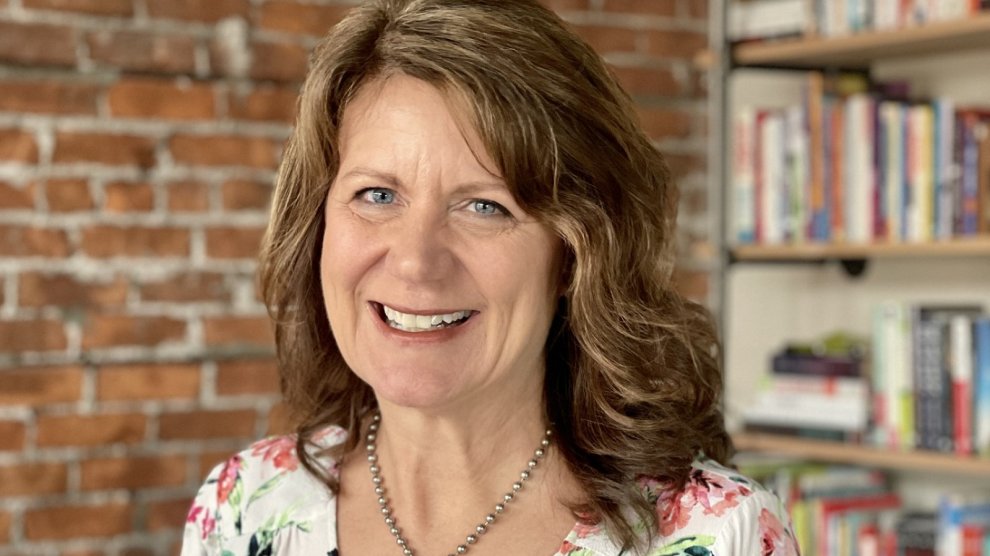When Karen Palka founded A Beautiful Me in 2008, she had two things: a small bank account and a desire to help girls develop their self-esteem. In the 15 years since, the organization has reached over 11,000 girls with its programs.
A Beautiful Me goes into schools to teach a four-session self-esteem curriculum to 5th-grade girls. But the girls wanted more. In 2019, the organization expanded to include a social enterprise, The Closet by A Beautiful Me, where girls learn business skills by selling special event dresses beginning in 8th grade.
Before A Beautiful Me’s first workshop in 2008, a friend told Palka she needed to measure outcomes. From the beginning, the organization has used a 10-question self-esteem assessment created by psychologist and Center for Nonviolent Communication founder Marshall Rosenberg. The assessment allows the team to track the efficacy of the eight-hour curriculum and how it helps girls develop their self-esteem.
“We have a lot of fun,” Palka said, but more importantly, “Our curriculum works. We have used it with diverse groups of girls from Michigan to Guatemala. I’ve taught with a translator right next to me. It works.”
Some of those girls return to A Beautiful Me as young adult volunteers, and alums say they continue to use the tools they learned from A Beautiful Me in their careers.
Managing a nonprofit
Palka spent 20 years of her career as the sole proprietor of a for-profit company. Her growth mindset meant she was constantly learning and evolving, and she carried that forward when she pivoted and founded A Beautiful Me.
Managing a nonprofit is a lot of work and can be exhausting. Fundraising, strategic planning, operational tasks, meetings, and ongoing learning must all happen to grow and provide the best services possible.
This dedication led to burnout for Palka. She didn’t realize she needed to take a sabbatical until a friend commented that she seemed like she was crashing. Now she encourages her team to speak up when they’re feeling overextended and to be intentional in planning their time off.
This level of community building has greatly enhanced the efficacy of the program. Since the internal members of A Beautiful Me care for each other and support each other’s health and well-being, they also can accomplish more for the community.
Notable achievements and next steps
Nonprofits measure success just like for-profit companies, but sometimes KPIs come in smiles and success stories. One child later invited Palka to her high school senior awards ceremony. Besides the girl’s parents, Palka was her only guest.
“She was acknowledging how A Beautiful Me had an impact on her life,” Palka said.
Another young woman who completed the program wants to bring the curriculum to her college community as a volunteer.
Palka’s next goal is to improve the long-term sustainability of the organization. This includes a succession plan and long-term financial security. A Beautiful Me’s financial plan includes proving the efficacy of the organization’s curriculum through evidence-based research. Palka’s team plans to partner with researchers at a local university to study their curriculum with the end goal of selling it to sustain the nonprofit long term and to allow the effective lessons to reach a wider range of young people.
Advice for starting a nonprofit — from someone who’s been there
People don’t realize how much work goes into launching and running a nonprofit: filing legal paperwork, creating a logo and brand, finding a team, fundraising, planning and measuring the work. “The biggest misconception is that running a nonprofit is easy,” said Palka. “If you want to create change and fill a need in your community, you can, but it’s hard work.”
It’s important to be intentional about joining groups and finding spaces to learn and grow. Nonprofit work also heavily relies on the ability to identify gaps in your community. By engaging with community members and coming to your research with open-mindedness, you are more likely to see what is needed and ask the question ‘What would help my community solve this issue?’.
No one can know everything at the start, but they do need to make sure to review, test and measure outcomes to understand the efficacy of their programming, just like in a for-profit. If someone sees a need and has the passion to fill that need, then go for it.
“Don’t get stuck in the planning. Sometimes you need to start before you feel ready.”






Add Comment